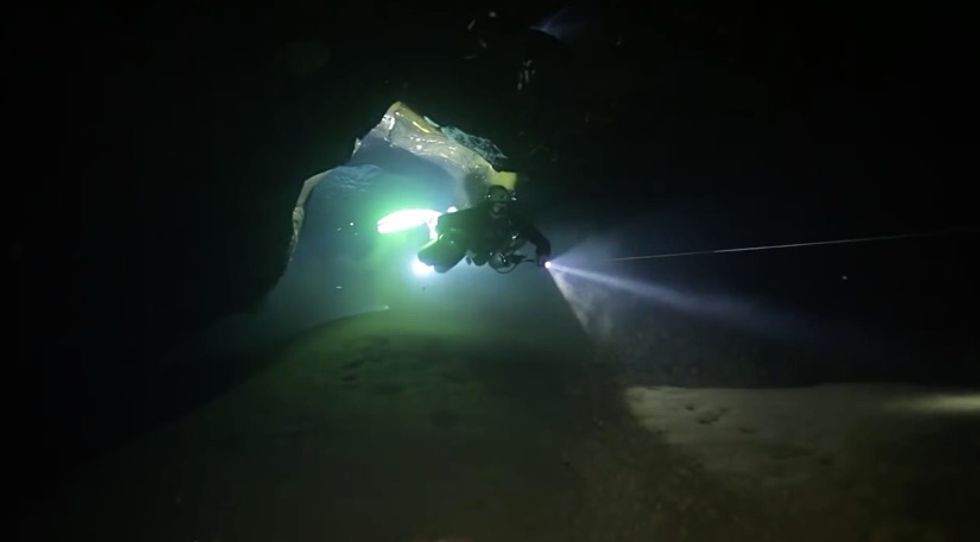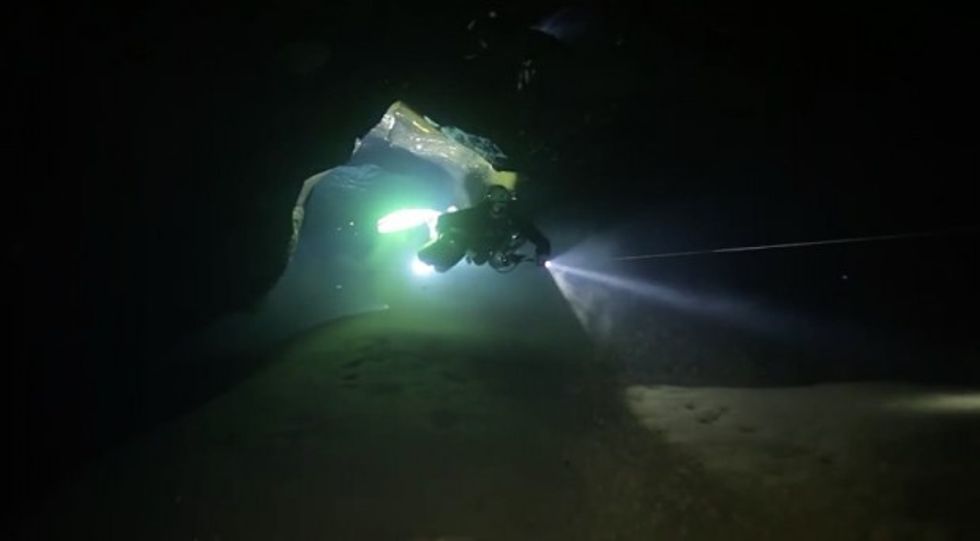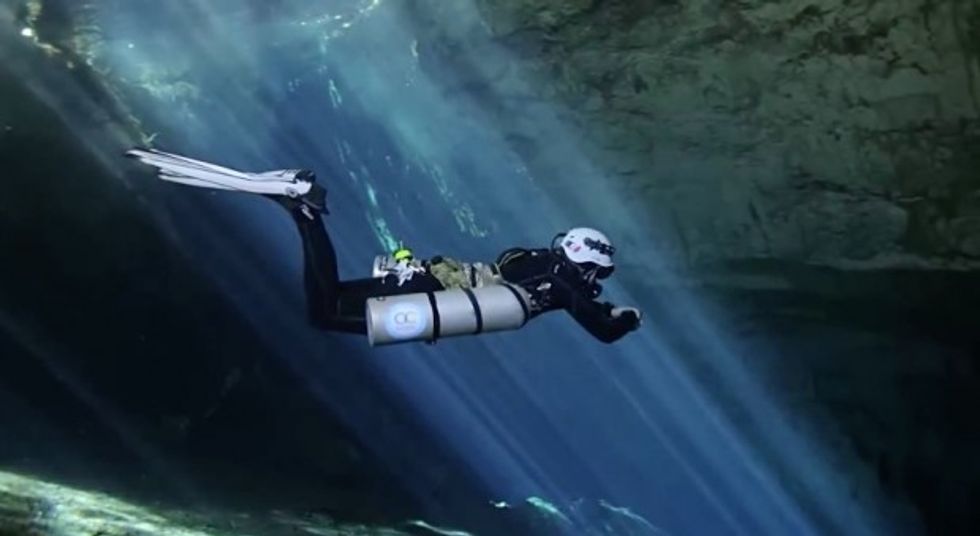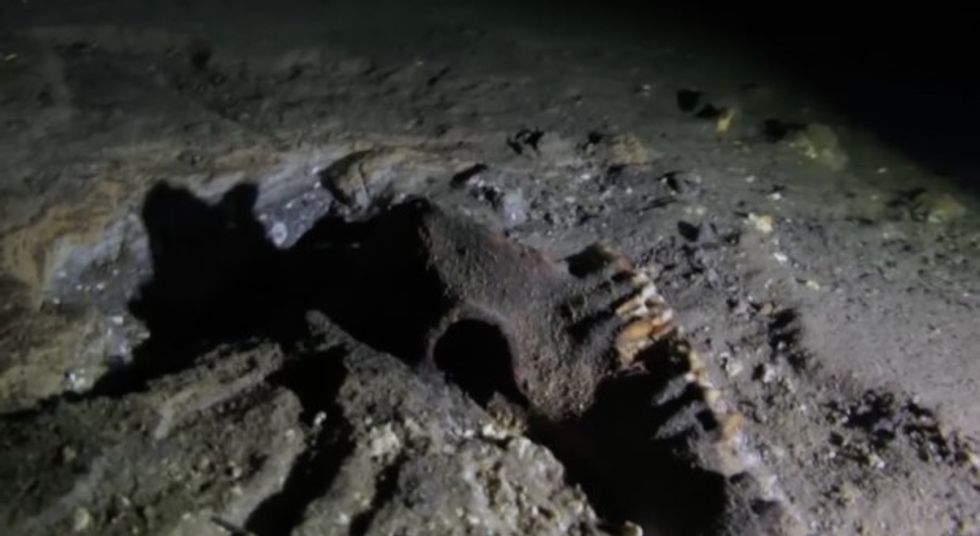
Image source: National Science Foundation

Tucked away inside a series of underwater caves for thousands of years, scientists have found an underwater graveyard littered with skeletons of extinct animals.
The National Geographic, which has taken part in the project, announced the remarkable findings Wednesday, saying it offered an "unprecedented look at the ancient primates."
— Scroll down for video —

The divers, anthropologists and paleontologists found hundreds of bones resting at the bed of the Aven Cave in Tsimanampetsotsa National Park in Madagascar.
Remains of the extinct elephant bird, turtles, crocodiles and other exotic species were recovered, the National Geographic said.


"We have a real cross-section," said Brooklyn College anthropologist Alfred Rosenberger, who is working with the National Geographic. "Tiny things and big things."
However, the most exciting discovery was the collection of bones found belonging to giant lemurs that once roamed the Earth. According to the National Science Foundation, which funded the project, the finding in one of "the most unique sites in the world" could be the largest ever made.

Going extinct sometime between 2,000 and 500 years ago, the largest of the extinct primates were as large as gorillas, according to the National Geographic.
"The preservation is really incredible," Rosenberger said, adding it was "unusual" because paleontologists often encounter broken bones.

Experts are still trying to crack the mystery of how all the animals ended up inside the Aven Cave. Rosenberger said that some of the lemurs appeared to have been "defleshed in place."
"The abundance of the Malagasy remains is extraordinary," Rutgers University anthropologist Susan Cachel said.
According to the National Science Foundation, the discovery could help break open a "totally new era" of underwater paleontology.
—
Follow Oliver Darcy (@oliverdarcy) on Twitter